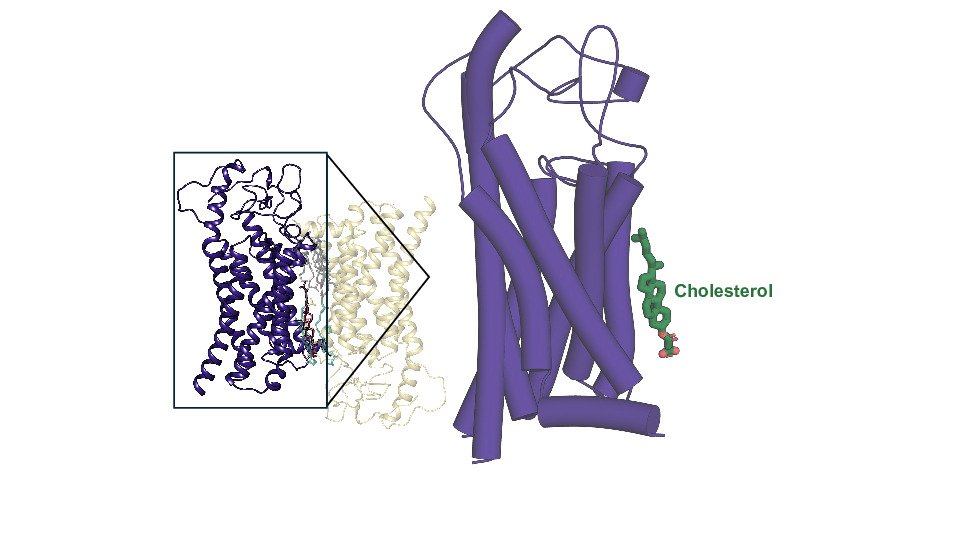New knowledge about cell receptors paves the way for new drugs against intestinal tumours

A new study from Karolinska Institutet published in Nature Communications provides valuable insights into the activation of receptors on the cell surface. The knowledge opens up for new targeted therapies and drugs against intestinal tumours, among other things.
On the surface of the cell are receptors, a kind of signal receiver, that convey information to the cell's interior. In a new study, researchers at, among others, Karolinska Institutet have focused on FZD7, a G-protein-coupled receptor that is involved in several important biological functions in the body. It is also linked to various cancers, including colorectal cancer.

“Receptor activation is an important step in how the cells receive and send out signals. When receptors such as FZD7 are activated, they trigger a series of events inside the cell that control cell growth, differentiation and movement,” explains the study’s last author Gunnar Schulte, professor at the Department of Physiology and Pharmacology, Karolinska Institutet.
Using cryo-electron microscopy, the researchers have been able to create a clear image of the structure of FZD7 with a resolution of 1.9 Angstrom. It is one of the best resolution that has been reported when this type of protein has been studied with cryo-electron microscopy.
“This outstanding resolution allows us to understand in detail the receptor's activation mechanism. Understanding these processes can help us develop targeted therapies for diseases where these pathways are disrupted, such as colorectal cancer,” says Gunnar Schulte.
Cholesterol plays an important role
The researchers discovered that the presence of cholesterol seems to facilitate the interaction between the FZD7 receptor and another protein called Dishevelled.
This interaction is the basis for the receptor to be able to transmit signals to the cell, and it is also crucial for driving various biological processes such as intestinal epithelium renewal and homeostasis.
Enabling targeted therapies
The results from the study not only increase the understanding of how receptors work, but also pave the way for the development of targeted medical therapies.
“In colorectal cancer, FZD7 is overactive. The activation mechanism is now revealed in great detail, which makes it easier to find therapeutic approaches to block the overactivity,” says Gunnar Schulte.
The study lays the foundation for future research that will be complemented by pharmacological analyses with the ultimate goal of developing drugs.
The study was funded by the Swedish Research Council, the Novo Nordisk Foundation, Karolinska Institutet, the Swedish Society for Medical Research, the Wenner-Gren Foundations and the Swedish Cancer Society. Data was collected at Karolinska Institutet’s 3D-EM facility.
Publication
"Structural basis of frizzled 7 activation and allosteric regulation", Julien Bous, Julia Kinsolving, Lukas Grätz, Magdalena M. Scharf, Jan Hendrik Voss, Berkay Selcuk, Ogün Adelbali, Gunnar Schulte. Nature Communications, online August 28 2024, doi: 10.1038/s41467-024-51664-4.
